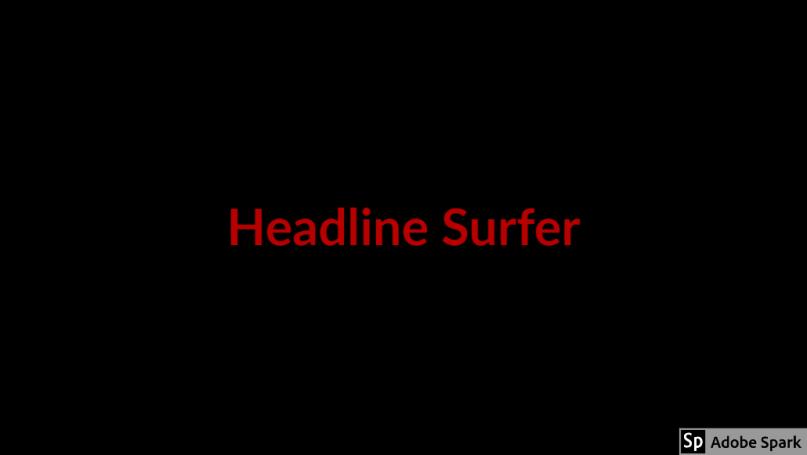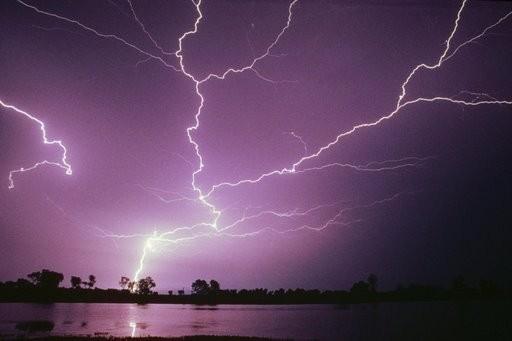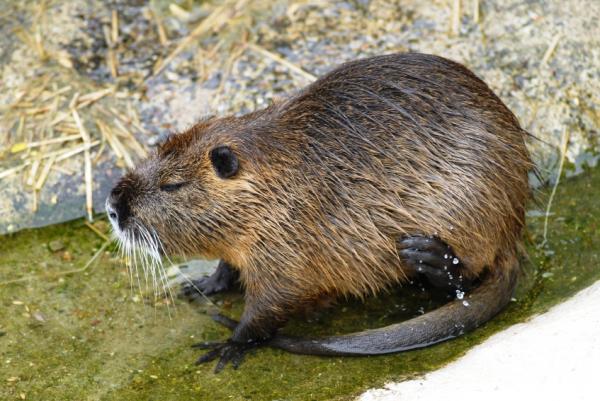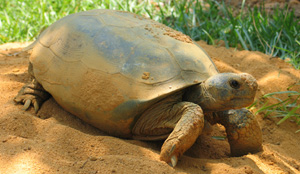
 Courtesy photo. Lightning was one thing, but nearly 20 inches was quite another to dampen anyone's spirits during the week-long rain storms that finally ended Sunday.
Courtesy photo. Lightning was one thing, but nearly 20 inches was quite another to dampen anyone's spirits during the week-long rain storms that finally ended Sunday.
The weather this past week has not been conducive for fishing anywhere, but in the nearest local aquarium. The Fish Stock tournament had a major disappointment due to the terrible weather including the nearly 20 inches of rain that we experienced, adding to a record drenching for May.
The inshore event was held but not the offshore, which was cancelled both days.
The winners of the inshore tournament were:
Redfish category -- 1. Gary Bell. Jason Gibson, & Doug White with 14.42 pounds 2. Richard Thomas, Beverly Thomas, Robert Demetree, & Joe Ventrello with 13.92 pounds, and 3. Mike Marple and Rubin Diaz with 12.3 pounds.
Spotted Sea Trout category -- 1. Ed Shackelford with 9.28 pounds, 2. Gary Bell with 8.3 pounds, and 3. Bob Fisher with 7.95 pounds.
The winning boat teams -- 1. Gary Bell. Jason Gibson, & Doug White with 22.72 pounds 2. Bill and Bob Fisher with 20.2 pounds and 3. Richard Thomas, Beverly Thomas, Robert Demetree, & Joe Ventrello with 19.7 pounds.
Lady angler division -- 1. Ms. Randall Manders with a 6.5 redfish, 2 Jody Mishler with a 6.5 trout, and 3. Jen Cohen with a 5.48 trout.
Junior angler category – 1. Carolyn Kelly captured two categories with a 5.88 pound redfish, a 5.78 pound redfish and a 3.08 pound trout.
Prior to the bad weather, the dolphin bite offshore remained very hot with many fish weighing up to 40 pounds being brought to the dock. Additionally, Sailfish and Wahoo continued along with the mahi-mahi, making for great days offshore. Cobias were also biting well as they swam with manta rays especially north of the inlet.
Nutria, webbed-footed marsh dwellers, doing damage to Florida wetlands
 Courtesy photo. The Nutria is a rodent-like pest that has found an adopted home in Florida from its native South America.
Courtesy photo. The Nutria is a rodent-like pest that has found an adopted home in Florida from its native South America.
The Nutria is a non-indigenous (not native; exotic) species that has become invasive into our state. Originally from South America, this large rodent resembles the beaver, but with a scaly rat-like tail.
They can weigh up to 30 pounds and grow to approximately three feet in length, from the snout to the tip of the tail. Although they live in shallow burrows on land, they possess webbed-feet and spend most of their lives in water. They are essentially marsh dwellers.
At first, when the nutria escaped into the wild from fur farms, they did not disrupt the ecosystem, which existed at that time. However, with the passage of time and the exponential increase in their numbers, nutria began to do significant damage to the wetlands in numerous states, including Florida, as they thrived on local vegetation and farm products like rice, carrots and other vegetables. A single nutria can consume three pounds of vegetation in a day. In coastal areas they also dine on shellfish and aquatic plants. The large populations of nutria continue to cause two types of damage in estuaries in coastal Louisiana: herbivory and burrowing damage.
Many people hoped that the natural predator of nutria, such as the American alligator, would eat enough of these rodents to keep their population in check; but such hopes were in vain. Herbivory damage to emergent marsh grasses is not the only problem caused by nutria appetites. Concerted efforts to regenerate bald cypress forests have largely been unsuccessful due to nutria damage. Nutria herbivory of bald cypress seedlings has been documented since the early 1960s. Nutria find the tender roots of newly planted bald cypress seedlings particularly irresistible.
Aside from the herbivory, nutria burrowing is a cause of significant damage in areas of infestation. Large underground tunnels built by nutria have caused weakening of the sides of drainage canals, water impoundments and levees. Overgrazing by the nutria exacerbates cave-ins and erosion problems in these areas.
In Florida, nutria burrowing into the banks of golf course ponds has caused cave-ins. Also, large numbers of nutria sunning themselves on some of the golf course's tees, especially in the summer, have scared golfers, who often mistake them for giant rats. In conclusion, the nutria brought to our country by fur makers to make “water rat coats," a product that never gained significant popularity, has become a nuisance animal.
Fortunately these are not aggressive animals. In fact, I recall sitting in a pirogue – a flat, shallow draft, low-sided boat shaped like a canoe – which I had wedged into some marsh grass to serve as a stable platform to use for the day's duck hunt. As I sat there, watching the sky and the decoys, I heard a rustling of the bushes to my right. Finally, out of the rattling bush stepped a huge nutria headed for my pirogue. Like it was going over a log lying in the water, the nutria nonchalantly climbed over the right side of the pirogue, inside to the floor, across the floor. and out the left side of the pirogue and continued its path to wherever it was headed. My presence was of no concern to the nutria that day; however, I did not share the same lack of concern. I was just glad that we had shared such a peaceful encounter.
Fishing report: Flounder are a great catch nearly everywhere
In the surf, besides the good whiting and pompano bite, there have been quite a few "large" bluefish in the 10- to 15-pound range caught - which is not common for this area. Gene Lytwyn at the Fishing Hole had a customer who caught a 73-pound black drum.
Snook have been reportedly tearing up artificial baits near the bridges from the Tomoka River to Spruce Creek. Flounder are hot nearly everywhere. There have been a lot of Jack Cravelle and ladyfish thrilling inshore anglers. Trout action is hot in the first two to three hours of the morning and then slows down. The trout are feeding well on pinfish.
Effective June 1, snook season closes along the Atlantic coast and inland waters and reopens Sept. 1. The recreational harvest season for snook will remain open until June 1 in Florida’s Atlantic coastal and inland waters, including Lake Okeechobee and the Kissimmee River. Anglers may keep one snook between 28-32 inches total length per day from these waters.
CCA Inshore tournament for kids a big success
The first annual CCA Inshore tournament for children was held May 16, at Down the Hatch. The catch and release tournament was a huge success and many parents said that they would be back in 2010. Outstanding catches were made. An example of some of them were a 30- inch, 11-pound trout by Nathan Malcolm, a 40-inch redfish by Eddy Rodriguez, and a 46-inch bonnet-head shark by William Davids.
Fishing story too good to make up
My friend, Rich Adamovic, infuriated two good friends when he invited them to go “fishing” with him offshore before the bad weather set in. After a 90-minute ride out to “his favorite spot”, his guests were anxious to get busy hauling in fish. Instead, Rich had one of them drop anchor as he pulled out the first iced case of beer.
When his guests looked at his fishing rods they were appalled to see only “el cheapo” snap swivels at the end of the fishing lines. There was nothing else on board – no weights, leader line, hooks, natural or artificial baits, or any other semblance of anything that could only remotely be described as fishing tackle.
When the two men looked at Rich and queried how he catches fish, he replied, “I don’t. I just sit at anchor all day relaxing, enjoying the sun and the tranquility of the ocean and drink beer.”
As the three of them consumed nearly two cases of beer, relaxing in the sun, and watching the ocean swells, the sun continued its course across the sky until it signaled that it was time for them to return to shore. As they returned to port, Rich had the audacity to say “we will have to do this again.” The law prevents me from printing his guest’s response.
Turtles, alligators and snakes begin nesting preparations
 Courtesy photo. The month of June is part of the new life cycle for many reptiles, including turtles, slligators and snakes.
Courtesy photo. The month of June is part of the new life cycle for many reptiles, including turtles, slligators and snakes.
Throughout the month of June, if you get outdoors and into nature, you can possibly witness Leatherback, loggerhead, and green sea turtles crawling ashore to lay eggs. Female alligators will begin to build nests and by the end of the month will be nesting. Tarpon will be migrating through the keys.
By the end of June, newly hatched sea turtles will head for the ocean; and the juvenile green sea turtles will forage on the ocean bottom close to the southeast coasts.
Black skimmers will be hatching their young on the beaches and mangroves. Indigo snakes will be laying their eggs - frequently in old gopher tortoise burrow. In fact, this month is also the peak period for gopher tortoise nesting. So you have many reasons to get out and enjoy nature.
Florida Fish and Wildlife Conservation Commissioner Kenneth Haddad wins conservation award
Kenneth Haddad, executive director of the Florida Fish and Wildlife Conservation Commission received a conservation award from the U.S. Fish and Wildlife Service for the efforts that he made in partnering with the Service.
Conservation efforts across the country require partnerships committed to management of fish and wild life. The U.S. Fish and Wildlife Service annually recognizes those organizations and individuals throughout the nation that partner with the Service to accomplish conservative goals.
Conservation work with the valuable help of many diverse partners takes many forms – from teaching a child to fish to helping save entire ecosystems. Haddad was recognized for his leadership and support for U.S. Fish and Wildlife Service projects like the Manatee Forum, manatee law enforcement efforts, bald eagle management, and interagency Florida Panther Response Team, and the Southeast Aquatic Resources Partnership.
Haddad began his career in 1978 as a marine biologist with the Florida Department of Natural Resources. When the FWC was formed in 1999, Haddad moved from the Florida Marine Research Institute to the FWC’s Fish and Wildlife Research Institute.
In 2002, the FWC appointed him executive director. He reorganized the agency with an emphasis on coordination among all of FWC’s operations and the agency’s partners. Under Haddad’s leadership, the FWC completed management for such species as the red-cockaded woodpeckers, bald eagles, manatees, and gopher tortoises.
Due to the department’s efforts the bald eagle was removed from the imperiled species list in 2008, Haddad was also recognized for developing strategies for species management and partnering to create state and federal resource priorities. The role of the FWC often requires a balancing act between conservation and the use by Florida’s eighteen million residents and 80 million visitors each year.
Understanding that the managers of Florida’s fish and wildlife cannot work in isolation is the cornerstone of Haddad’s leadership style.
“As our population grows, development increases and the climate changes, we must continue to strengthen our partnerships with the U.S. Fish and Wildlife Service and others,” Haddad said. “How we manage resources today represents what resources we will have tomorrow.”
Boating fatalities drop 30 percent in 2008 compared to previous year
The FWC has released the boating accident statistics for 2008 with 54 reported fatalities. Fortunately, that's a 30 percent drop there were less boating fatalities than the year before. In 2008, there were 54 reported fatalities – a 30 percent decrease.
This is a step in the right direction, but boaters should not let their guards down.
"Although fatalities were down in 2008, so far in 2009, 21 people have lost their lives on state’s waters.“ said Lt. Ed Cates of the FWC’s Boating and Waterways Section. “Boaters can be safer by following a few simple boating safety tips.”
Most boating accidents are the result of someone not paying attention or because of speeding. Cates suggests that boaters slow down and stay alert to their surroundings. Drowning is the leading cause of boating fatalities, even though most of the victims reportedly knew how to swim. The greatest way to assure safety is by wearing a life vest. It is best not to consume alcoholic beverages while boating. The FWC also suggests that boaters invest in an Emergency Position – Indicating Radio Beacon so that rescuers can find them rapidly in case of trouble.
Post Script:
It has been written; “I have never found a companion that was so companionable as the solitude that one can have in a hunting or fishing trip.” So whether you charter, ride a head boat, run your own vessel, stay in the river, surf fish, or fish from shore or a bridge- there are fish to be caught. Fishing is not a matter of life or death, it is so much more important than that.
